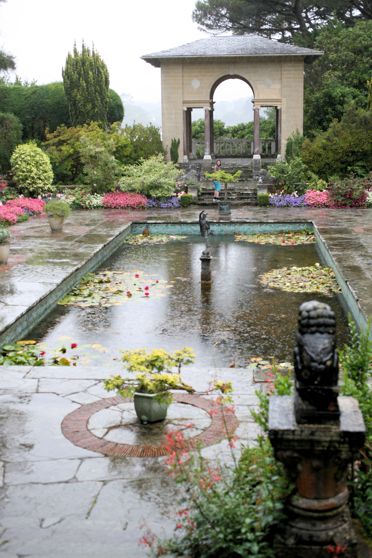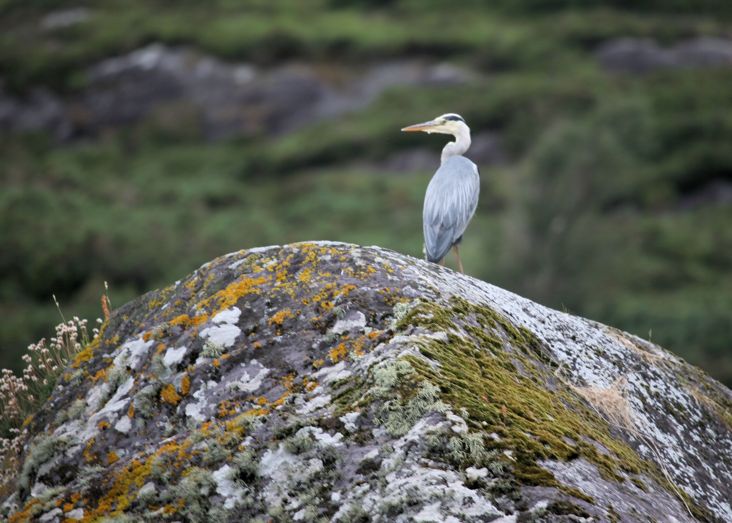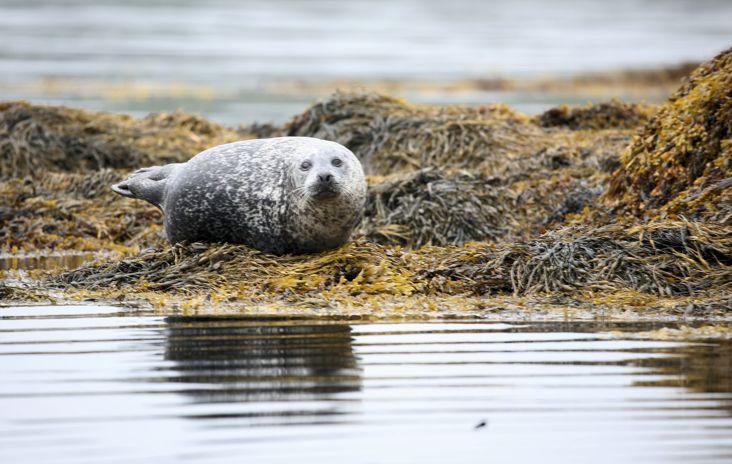
Today was a welcomed scheduled rest day from cycling, and involved visiting two special sites in the vicinity of Glengarriff on the eastern side of the Beara Peninsula. In the morning we visited Glengarriff National Nature Reserve, a 300 ha stretch of semi-natural woodland and grassland that cloaks the hillside overlooking Glengarriff. National Parks and Wildlife Service own and manage this area on behalf of the State and a number of walks meander through the reserve where visitors can explore . And there is plenty to explore here. The reserve supports a colony of about 330 Lesser Horseshoe bats, a species which is confined to counties Cork, Kerry, Clare and Galway and a high conservation priority. When renovating one of the offices here, NPWS provided a large opening into the attic to allow access for these bats. A large winter nursery roost, a hobbit-like underground cellar, was also built, so that now they have both safe summer and winter roosts. A real success story for this species.

A short walk through the woodlands here show that the ground and trees are bedecked in luscious mosses and lichens, a miniature amazonian-like jungle of incredible diversity, testament to the damp climate and beautifully fresh air. Home to many rare and localised species, like the Strawberry Tree, Narrow-leaved Helleborine and Kidney Saxifrage, the woodland is one of the best examples of an oceanic sessile oakwood, and rated at least as highly as its more illustrious neighbour the Killarney oakwoods. Has the added advantage that it doesn’t suffer the acute grazing problems like Killarney, consequently the woods can regenerate naturally.
We also managed time to walk to Lady Bantry’s Lookout, where we got stunning views of the surrounding countryside and Bantry Bay. Clare even found for us the infamous Kerry Slug which I had not seen before. Strange, neither Felix nor Bella seemed impressed!

Although only a couple of kilometres away, the afternoon’s experience was completely different as we made a brief visit to Garnish Island. Kevin Ger O’Sullivan brought us on his small boat ‘the long way’ to the island, giving us close views of the Common Seals with their young, basking on the rocks. He also showed us the huge nest of the White-tailed Sea Eagle where two chick hatched, but perished, a few weeks back. The local community were understandably excited about the new arrivals to the area, and were disappointed that the chicks didn’t survive. But it is great to see the enthusiasm of the locals for these birds, which is in stark contrast to the mindless persecution that we have seen elsewhere.


Garnish Island is owned and managed by the Office of Public Works and the Foreman Finbarr O’Sullivan kindly agreed to show us around. This is an incredible tribute to what can be done with vision, will power and a healthy bank balance. Between 1911 and 1917 Annan Bryce and Harold Peto set about transforming a barren, windswept rock into an incredibly rich garden, supporting an amazing array of exotic plants from all over the world. With a great deal of rock blasting, importation of soil from the mainland and the planting of trees to serve as a shelter belt, the formal and walled gardens were created. The shelter combined with the warm winter temperature and high rainfall, up to 2,500 mm in some years, creates conditions allowing even the most delicate of plants to survive. There is nothing ‘natural’ about this island, and the contrast with Glengarriff Nature Reserve is striking. Both, in their own way, have an incredible beauty, but from opposite ends of the spectrum.

